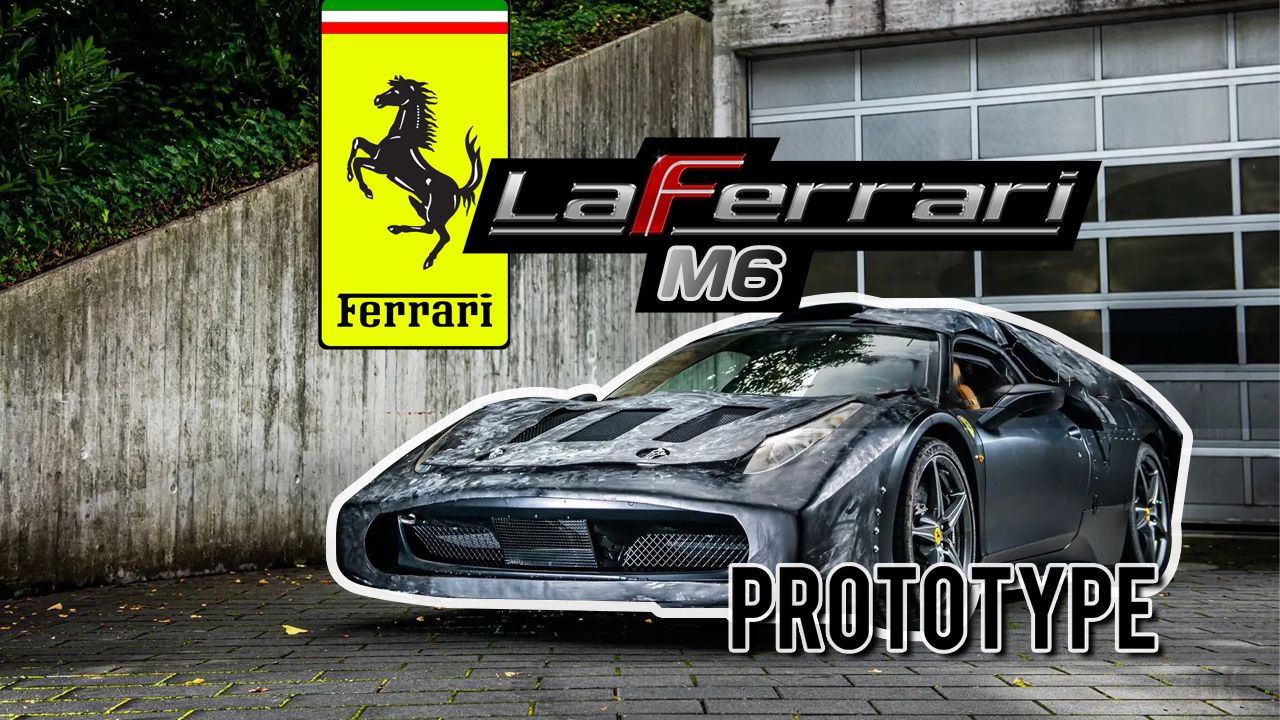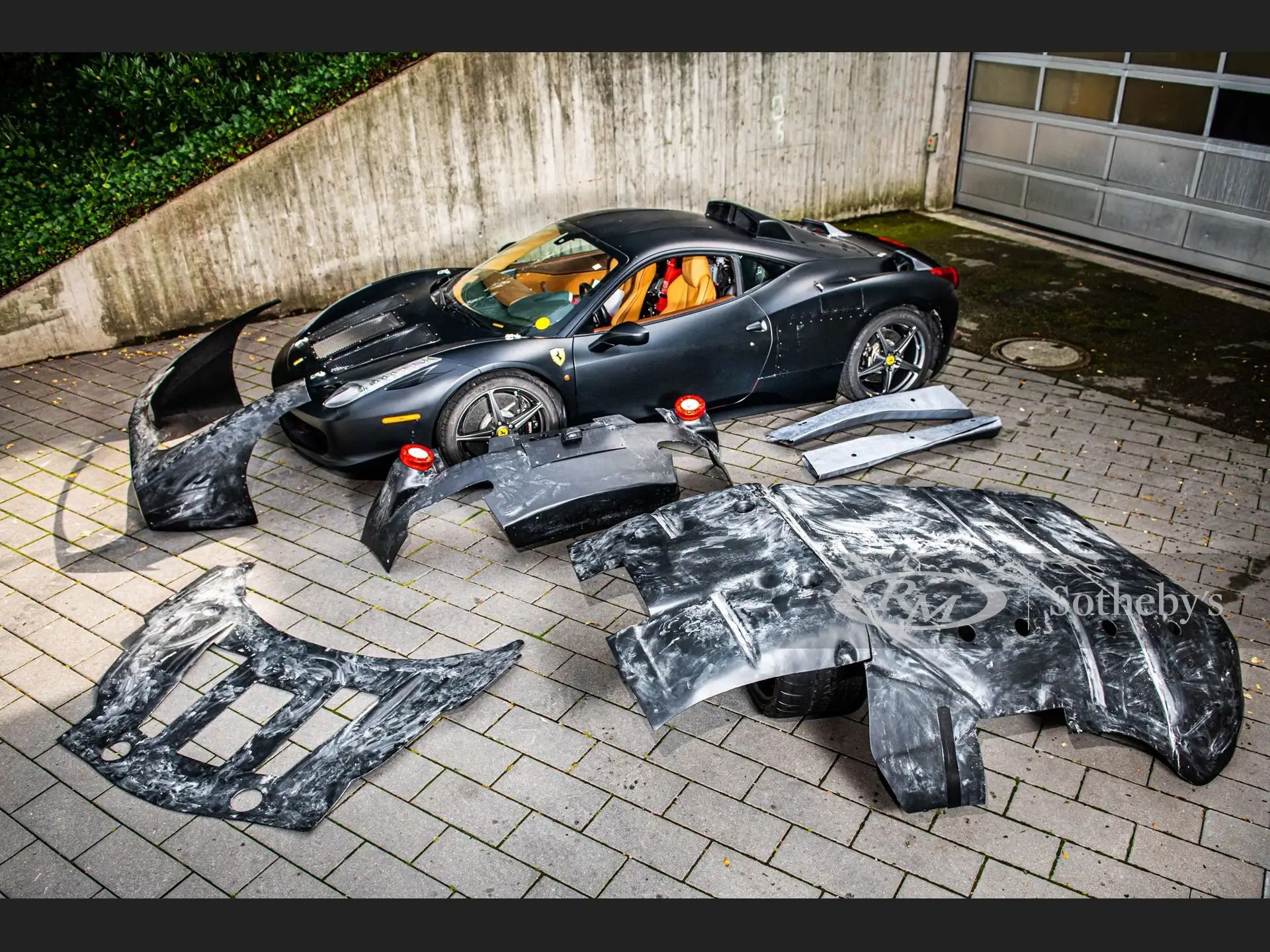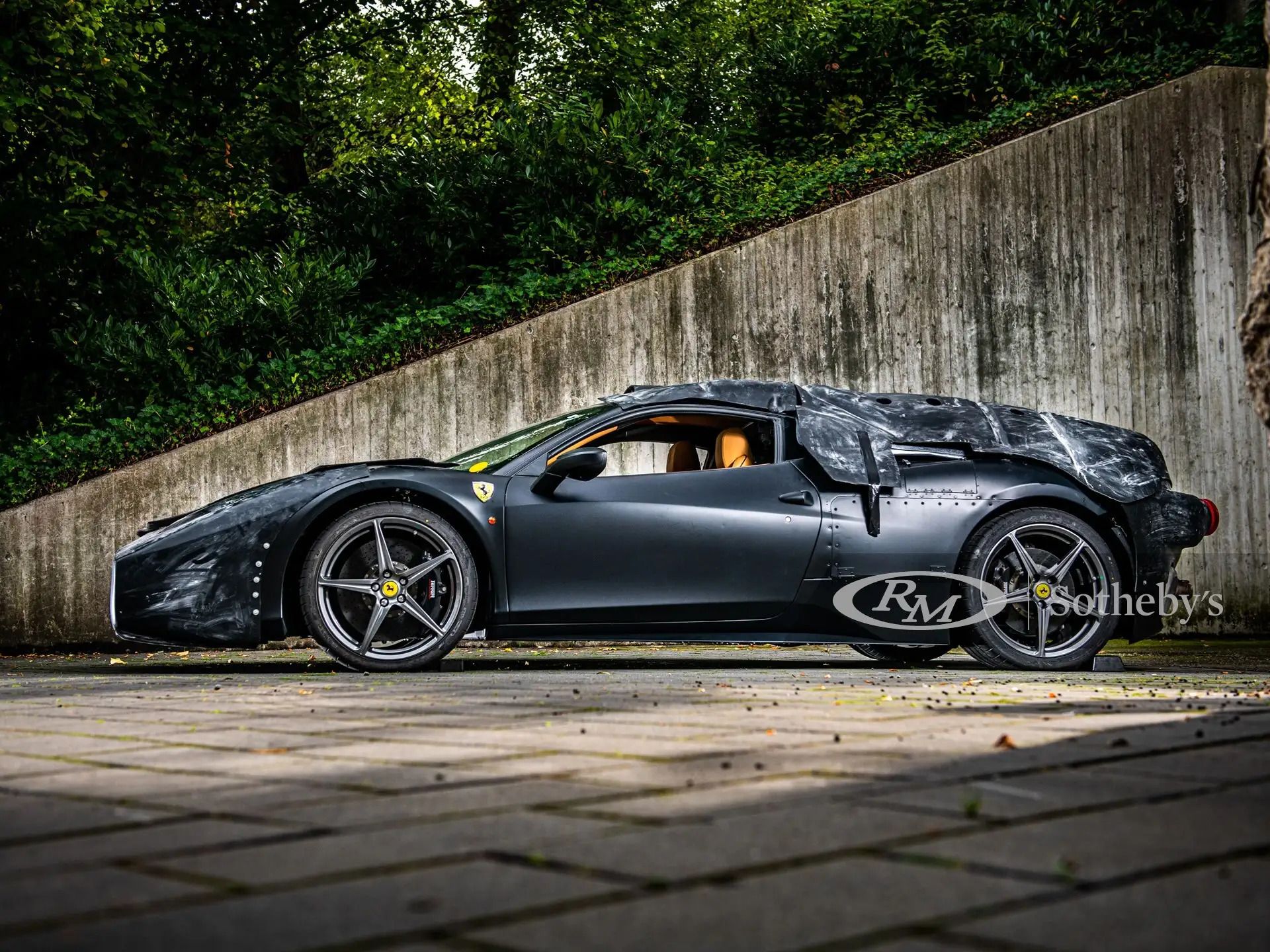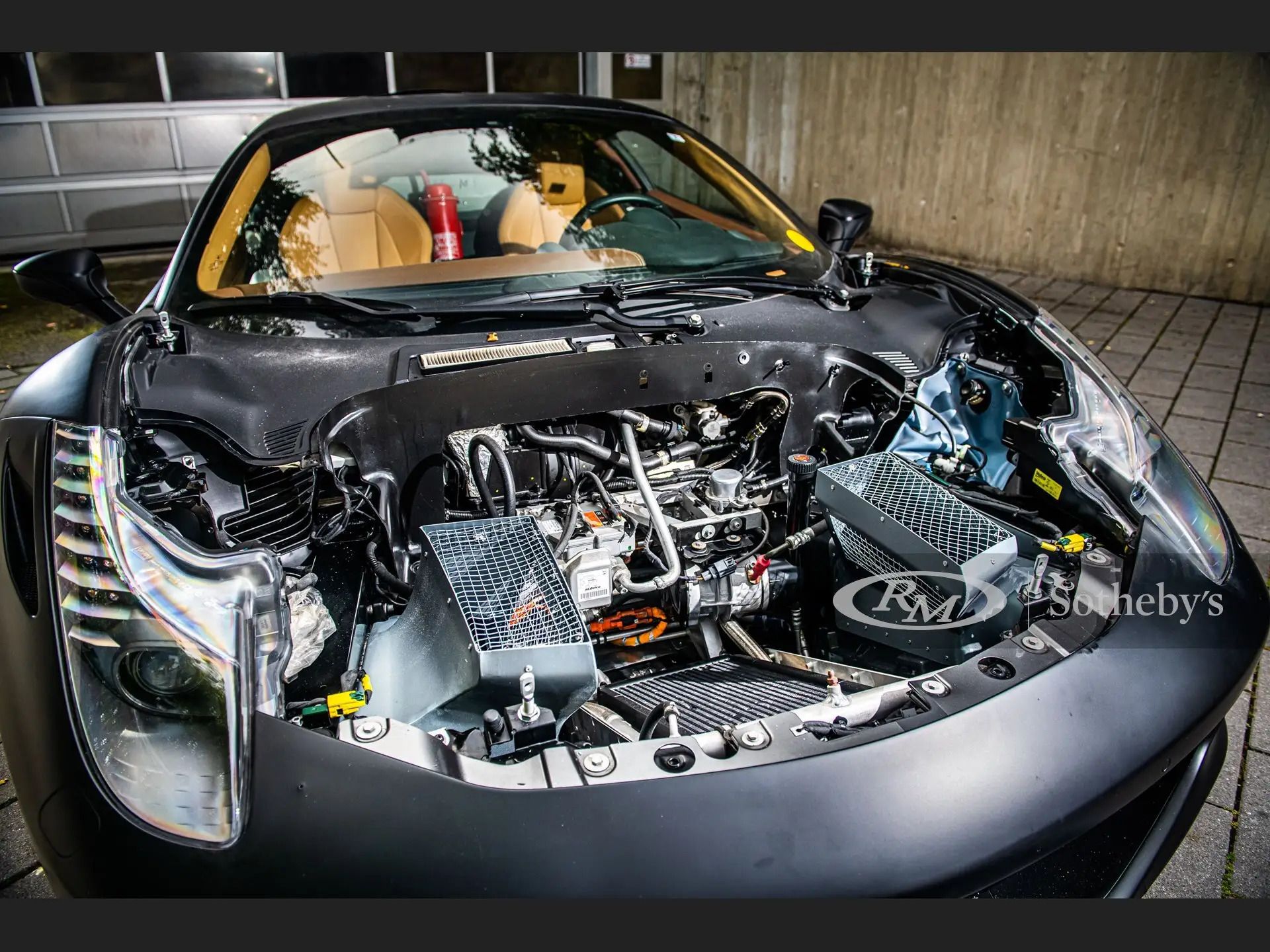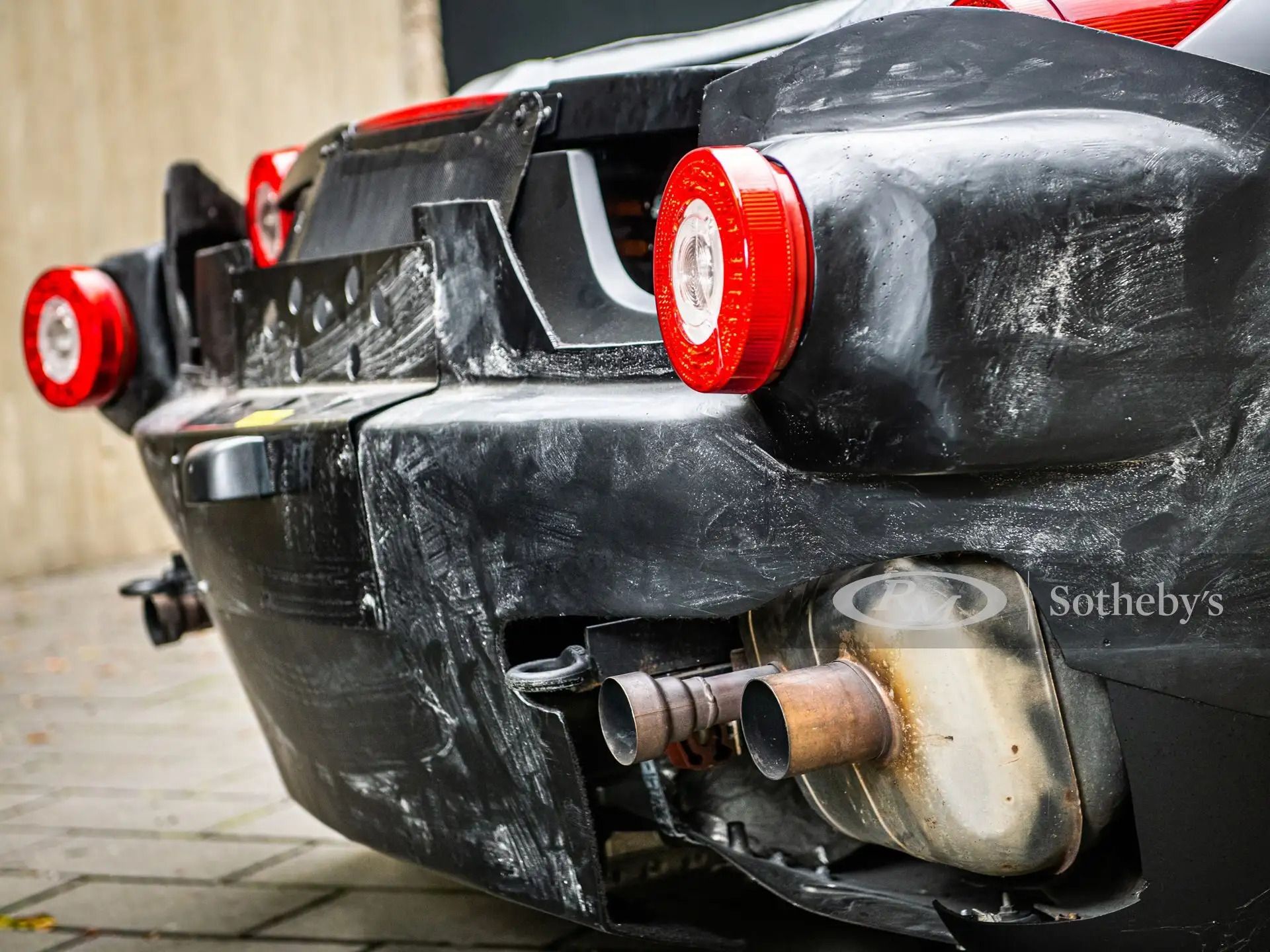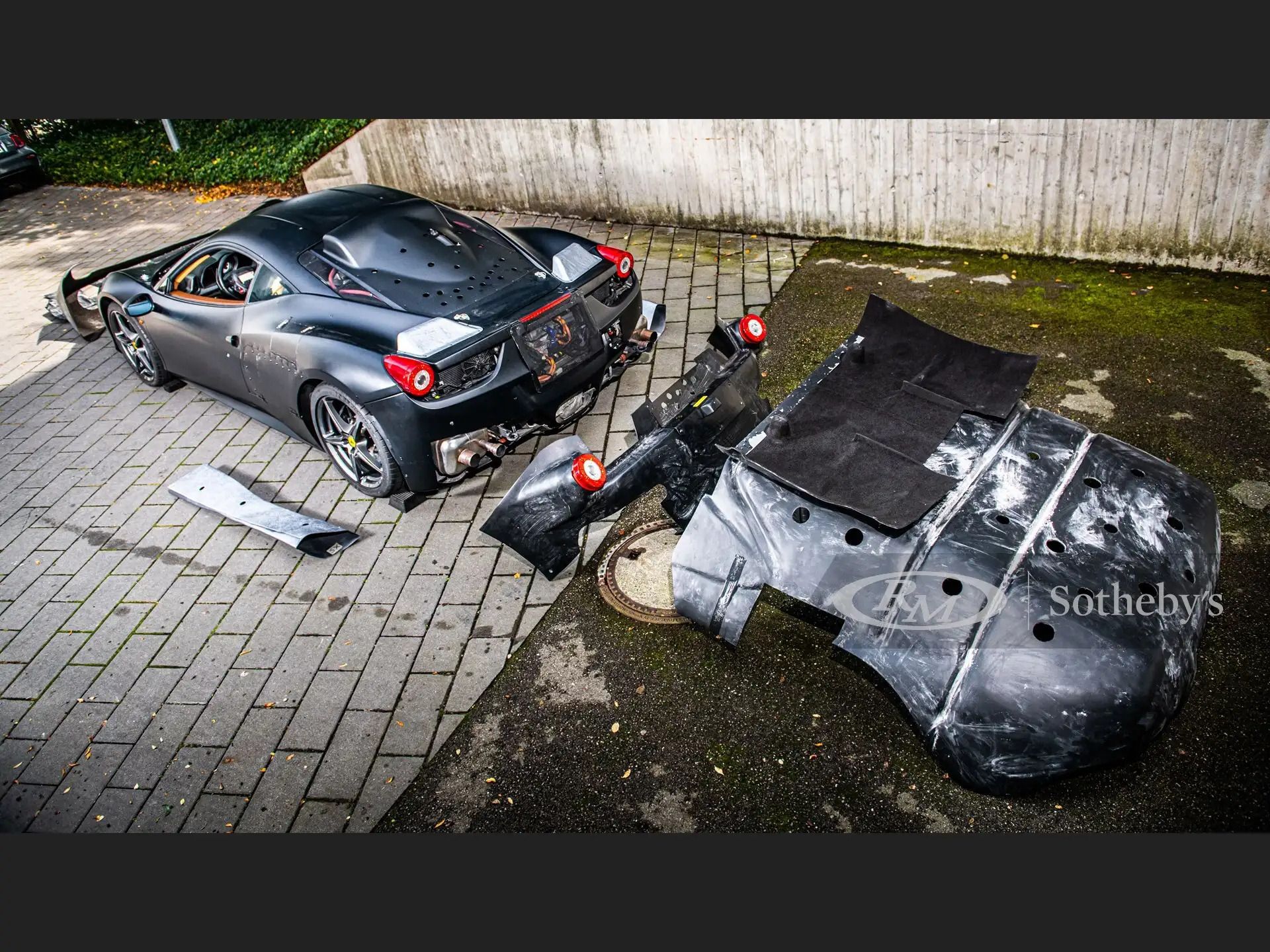2013 will always be known as one of the most active years for supercar production with not one, not two, but three supercars all going into production within the short time frame of about five months. The McLaren P1 and Porsche 918 Spyder were two of those cars, with the third being the Ferrari LaFerrari. Internally known as the F150, the LaFerrari would follow the path of other great models like the 288 GTO, F40, F50, and the iconic Ferrari Enzo. The LaFerrari is quite rare, with only 499 examples being built which was followed by 2109 examples of the open-top Aperta. There were three other cars, though. Well, test mules, to be exact, and the car you see here today is the first of three. It’s the definition of rare because it’s not exactly a LaFerrari, but it paved the way for the car you know as the LaFerrari today.
Ferrari LaFerrari M6 Prototype – It All Started with a 458 Italia
Ferrari broke the testing and development of the LaFerrari into three basic stages, all of which required extensive modification and testing. The first cycle was dominated by the car you see here. Known as the M6 prototype it was based on Ferrari’s Type F142 platform, which you probably know as the Ferrari 458 Italia. So, if you were looking at the images and thinking that this isn’t a LaFerrari, you’d technically be right, as there are clear hints toward the 458. The side panels, for example, as smooth and uninterrupted – one of the more dominant features of the 458’s design – and quite important as this prototype didn’t even have the side-mounted air scoops.
As Ferrari’s first car since the Dino 308 GT4 not to wear a Pininfarina design, the LaFerrari was extra unique. Ferrari has to modify the 458’s aluminum chassis to support the hybrid powertrain, which in this prototype was also different. The M6 prototype was powered by an F140FB V-12 which is an earlier example of the production LaFerrari’s F140FE V-12. According to the post on RM Sotheby’s this specific test car was also used for researching the LaFerrari’s weight distribution, which is why there’s a huge patch on the side – this is where engineers modified and adapted the shock tower.
This car was in service between May 2011 and December 2012 and was primarily purposed with the testing of various mechanical components. This included the brakes, suspension, steering, and tire integration. It was also the first to feature Ferrari’s electronic stability program (ESP) and was the main initial prototype to facilitate extensive testing of the then-new prototype hybrid system. Over the year and a half that the M6 prototype was in service, it covered a total of 3,322 km or around 2,064 miles, which is actually a lot for the first of three test mules. It’s hard to fathom the extent of testing and development this piece of Ferrari history went through during its time of service.
When the M6 Prototype was retired, two other cars followed. It was succeeded by the “Second Family Mulotipo” and the “Third Family Preserie,” both of which looked a lot more like the final production of the LaFerrari than this one does. Ferrari held onto the M6 prototype until 2016 when it was sold to a private buyer. It was refreshed and repainted as part of the deal, but it is officially recognized by Ferrari and is certified by the automaker's Classiche division. It’s not road legal, either, so it can’t be registered for the road, but it does come with a number of additional exterior parts that it wore at one point or another during testing.
It would make an awesome model to add to any collection, even if it can’t be driven on the road. Between the hand-cut access panels outside, the exposed metalwork inside, printed tester's notes glued to the dash, and the very cool hand-written marker annotations, this thing just resonates the vibe of just how rigorous Ferrari’s research and development phases really are. As for how much this thing will fetch at auction, there’s not even an estimate, but a later prototype sold for some $2.2 million back in 2017, so you can imagine the first prototype will fetch a similar sum if not more.
Needless to say, this car’s sacrifice led to one of the most iconic models to ever roll out of Ferrari. The final production version delivered a cool 950 horsepower and the coupe was able to sprint to 60 mph in less than three seconds. That type of performance is a little more common today, but back in the early 2010s, it was certainly something special.

